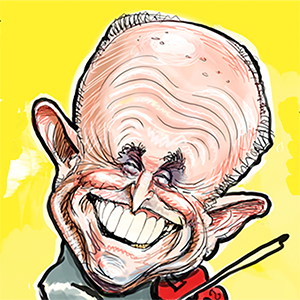Candidates, What Do You Propose?
WASHINGTON -- It's far too early in the campaign season to bemoan the absence of serious policy proposals from the presidential candidates -- but not too soon to set out some parameters of what those proposals, whatever the candidate's ideology, should be expected to address.
Issues of character and judgment matter, whether they involve Hillary Clinton's emails and speaking fees or Jeb Bush's rearview mirror on Iraq. So do candidates' takes on the hot-button issues of the day, from immigration reform to trade to Common Core education standards.
But in the end, the fundamental question facing the would-be presidents, especially on the domestic front, is what the size and scope of government should be, and how its operations should be financed.
To that end, a recent exercise by the Peter G. Peterson Foundation, a fiscal watchdog group, offers a useful set of benchmarks for assessing the candidates. The foundation asked five policy groups from across the ideological spectrum to devise budget proposals that would stabilize the debt while funding their priorities, and to write memos to the next president outlining their approaches.
The resulting plans present a menu of options -- some unexpectedly overlapping, some radically and predictably diverging -- prepared by the conservative American Action Forum (AAF) and American Enterprise Institute (AEI), the centrist Bipartisan Policy Center (BPC), and the liberal Center for American Progress (CAP) and Economic Policy Institute (EPI). The nascent 2016 campaign would benefit if candidates were asked to identify which of these plans best expresses their governing priorities -- or what their alternative would be.
In liberal circles, talking about the debt has become as unseemly as belching in public. So one striking thing about the plans was that even the two liberal groups didn't quarrel with the mission of putting the debt on a more sustainable path, which each accomplished largely by raising taxes on the wealthiest Americans.
Under current policy, debt held by the public is on track to climb to more than 100 percent of gross domestic product in 25 years, scarily above the current 74 percent of GDP and the 50-year historical average of about 40 percent. The CAP plan would drive the debt down to 46 percent of GDP by 2040, the EPI plan to 54 percent. Notably, that is less than the 63 percent envisioned by AEI and the 76 percent forecast by BPC. By contrast, the most conservative plan, from AAF, would drive debt below 16 percent of GDP by slashing spending to bare-bones levels.
Another conclusion that fairly leaps off the Peterson charts is the degree to which the federal budgetary challenge comes down to health care and Social Security. Under any of the plans, the federal government increasingly becomes a health care and pension provider that also spends a far smaller amount on defense, dabbles in other activities and writes checks to creditors.
Taking the BPC plan as an example, the government in 2040 would spend an amount equivalent to 15 percent of GDP on health care (9 percent) and Social Security (6 percent), while devoting 3 percent of GDP to defense, 4 percent to the rest of the operations of the federal government and 4 percent to interest payments.
As might be expected, the liberal groups want to spend more on domestic priorities and raise more revenue to foot those bills. The biggest areas of ideological divergence involve health care spending and taxation. AAF and AEI would junk the Affordable Care Act and turn Medicare into a premium support program under which seniors receive subsidies to purchase private coverage. Where the two conservative groups would eliminate taxes on saving and investment income, their liberal counterparts would increase taxes on capital gains and dividends.
Still, there are remarkable areas of convergence. No one thinks the existing tax system works; all five groups would radically overhaul the tax code, eliminating most individual and corporate deductions. Three (AEI, CAP and EPI) would adopt a carbon tax; four (all but AAF) would increase the gas tax as well. Three (AAF, BPC and CAP) point to immigration reform as a revenue-raising mechanism by growing the labor force as baby boomers retire.
The Peterson exercise demonstrates: You don't have to be a deficit scold -- or even a debt worrier -- to believe that pressing candidates to lay out their budgetary plans would make for a better-informed campaign. Not to mention a country better prepared for the presidency to follow.
========
Ruth Marcus' email address is ruthmarcus@washpost.com.
Copyright 2015 Washington Post Writers Group























Comments